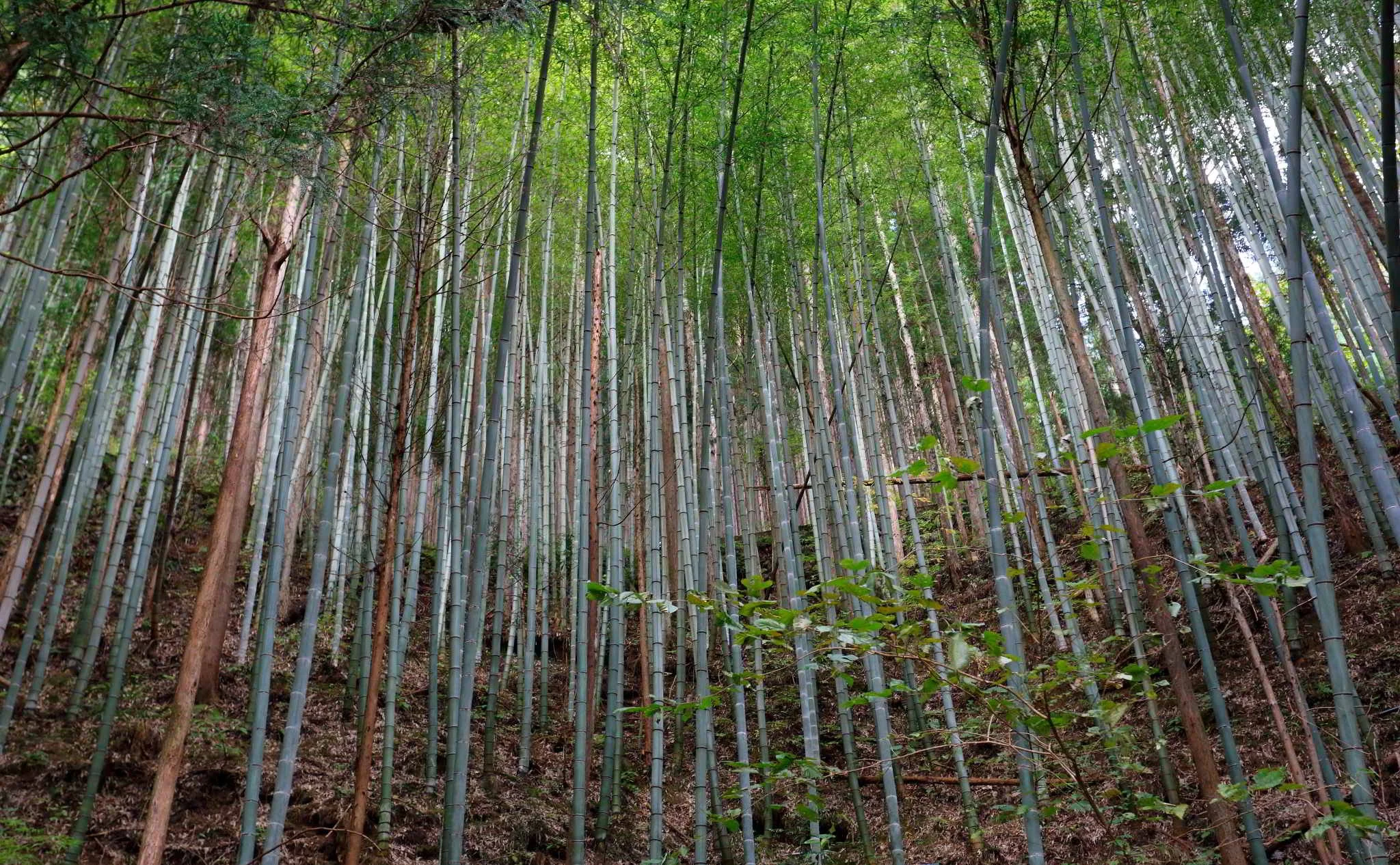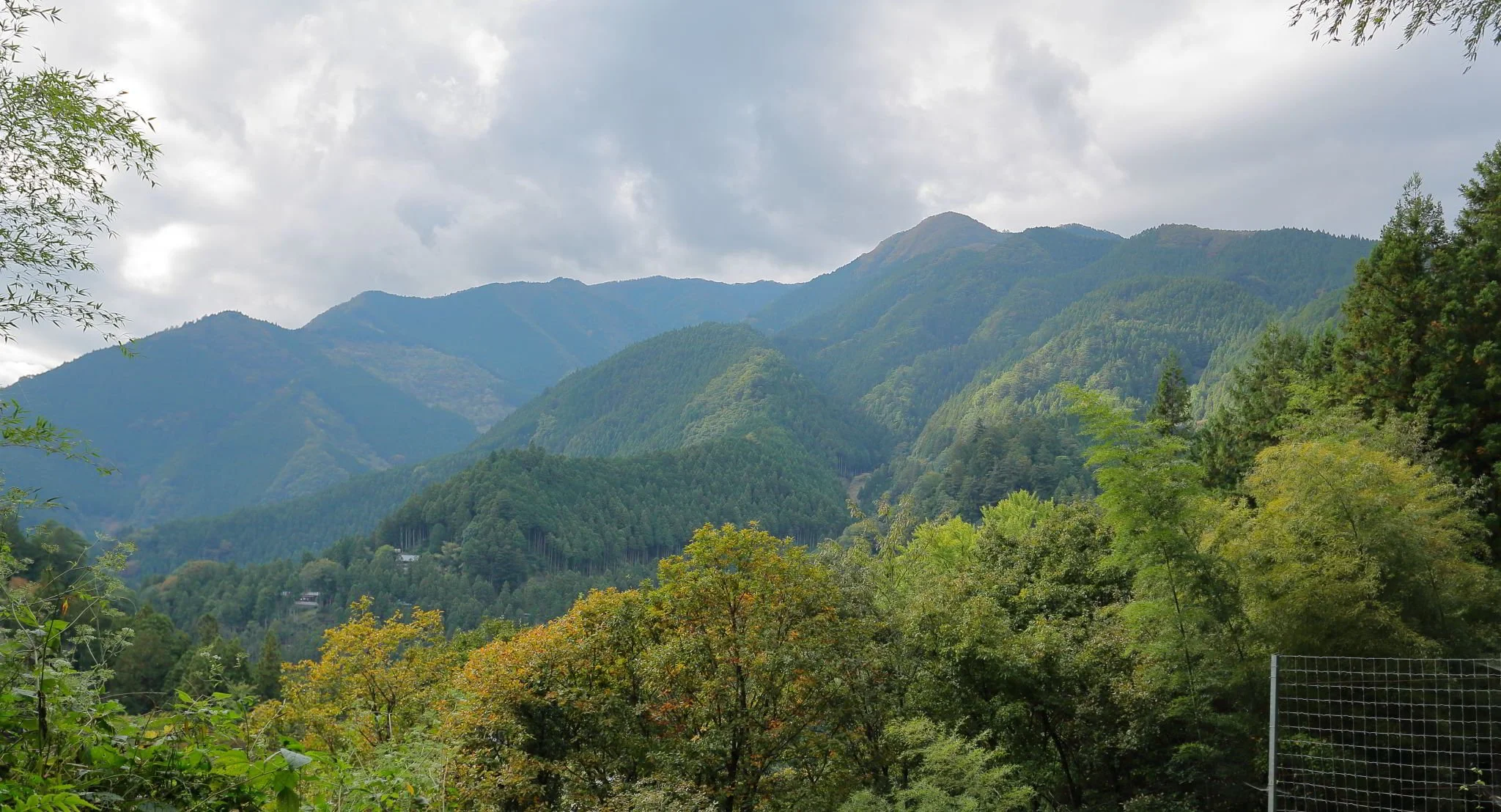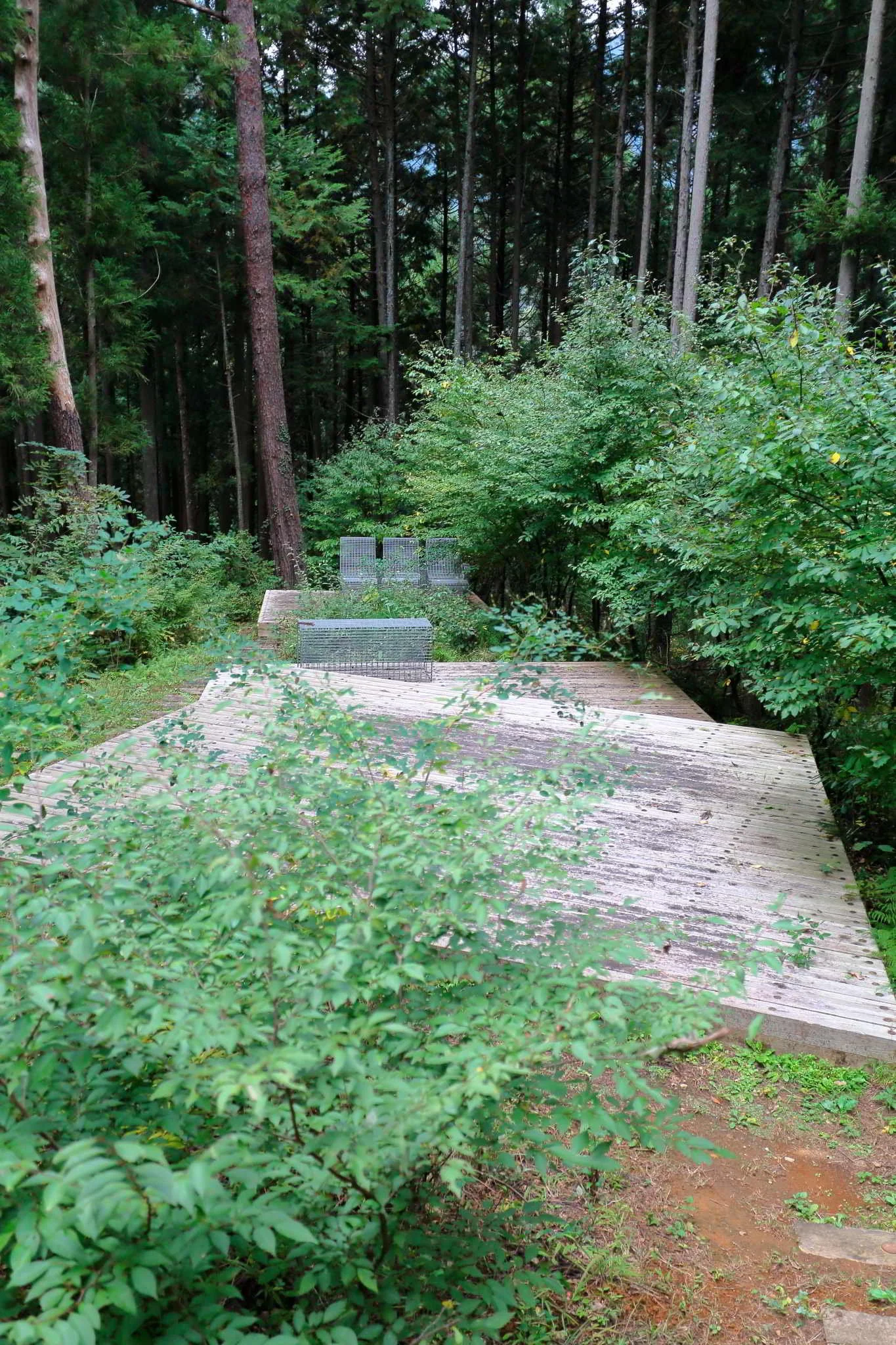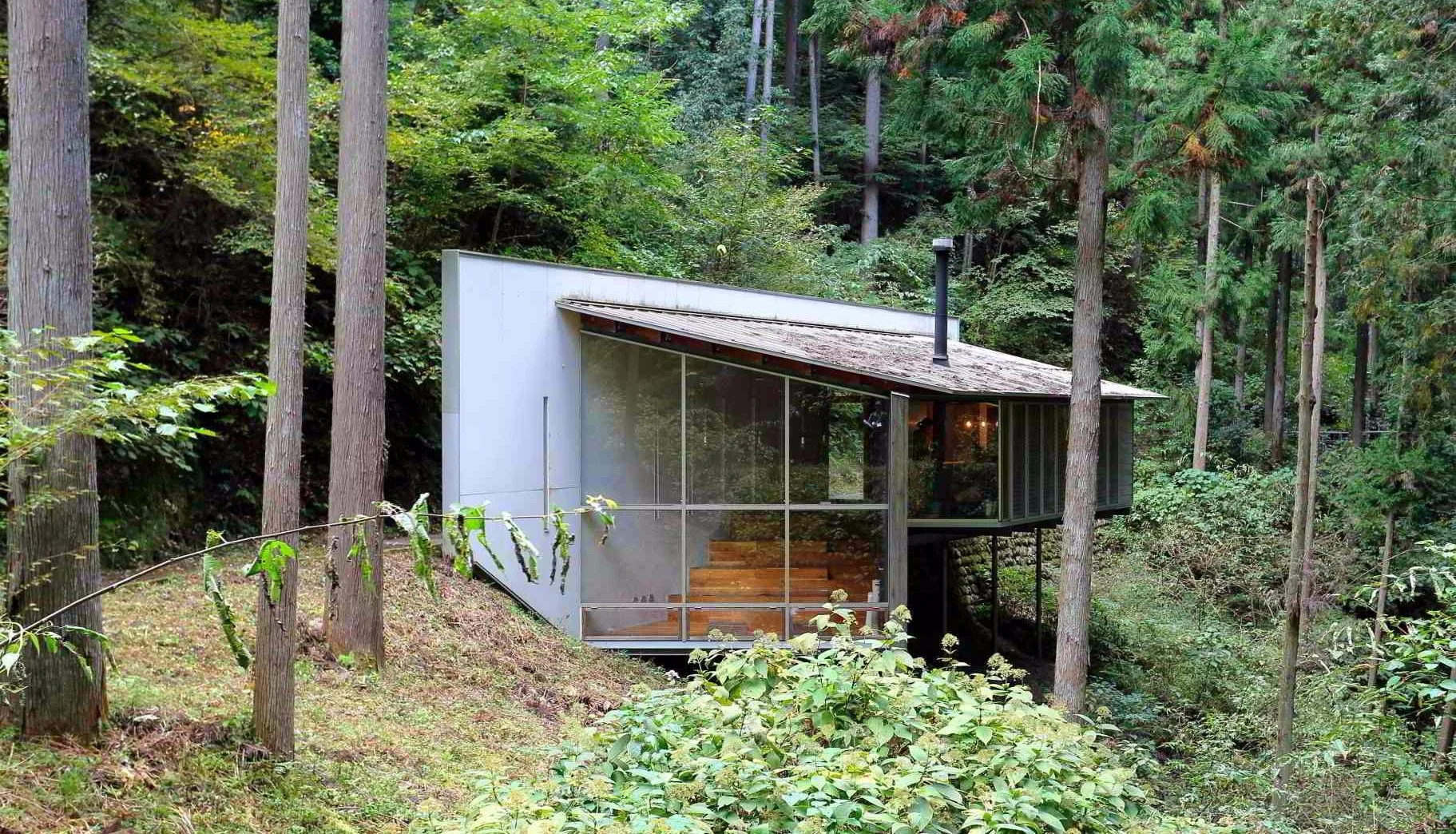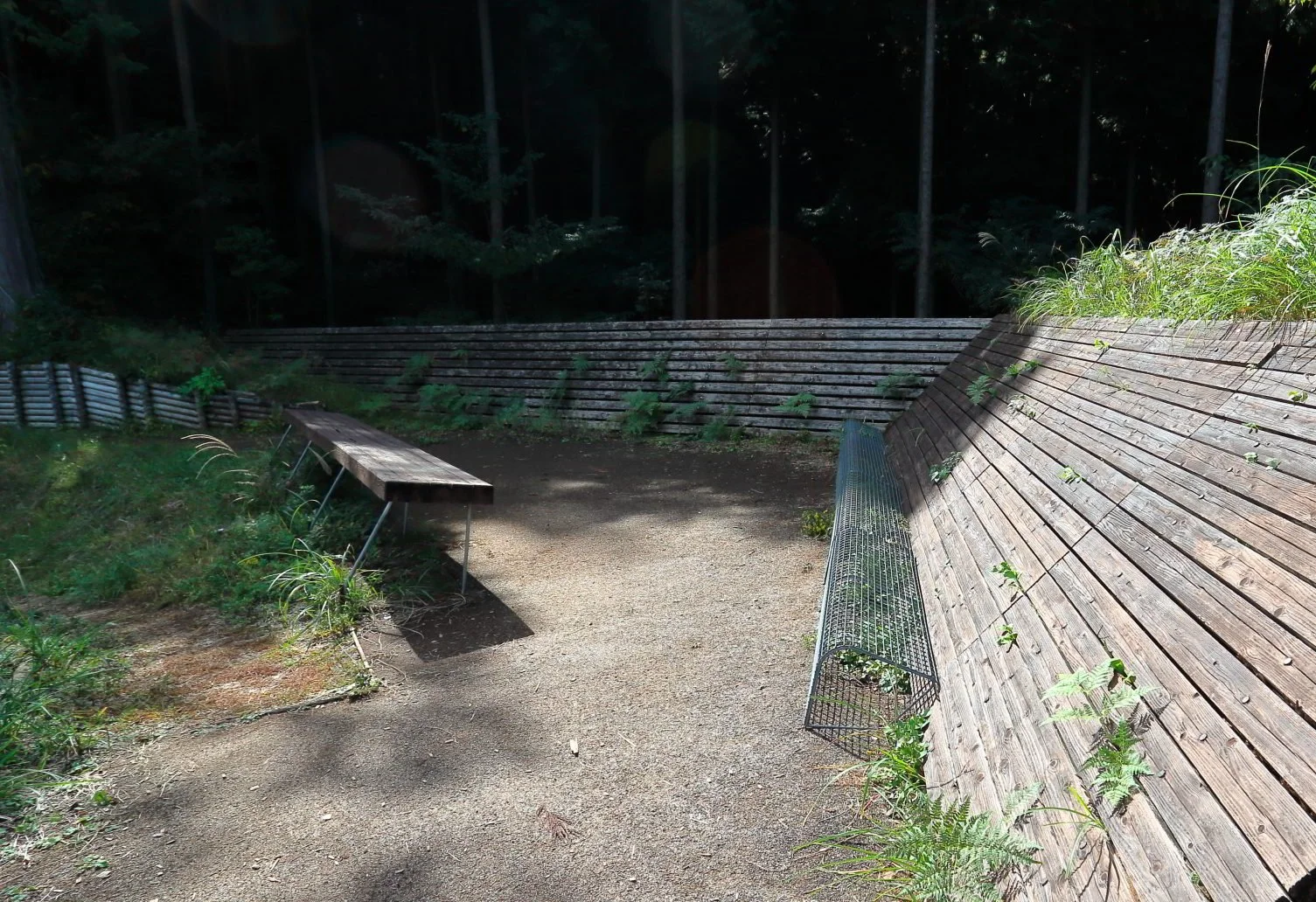Okutama Town
Okutama Town Forest Therapy Centre
Bamboo and conifers living together
My next stop was the Okutama Forest Therapy base near Tokyo. At about one and a half hours by car from downtown Tokyo, we find this picturesque town by the Tama river. Thick forests on both sides of this river valley as far as the eye can see. I later learned that this area has 97% of its area covered by forests. Being closer to the ocean, you can tell that the autumn colours are far from starting to show themselves yet.
I slept in a local pension type of residence just minutes to the Oku-Tama train station, the meeting place with my guide Kenichi, and Forest Therapy Base administrator Keiko. I waited for them while having a can of cold coffee off a vending machine as I have been doing for the last few days. It is hard to find a place that sells hot coffee in the morning …
After we met, they drove me to the Forest Therapy Base about 20 minutes outside of town. The Okutama Forest Therapy base has invested almost 2 million dollars in Infrastructure and it is very apparent throughout the tour. When we arrived, we entered a single story modern building with a spacious meeting area, a modest kitchen and public bathrooms. I had the usual tests done there, blood pressure and saliva test. This being my third Shinrin Yoku walk within a week, they were quite impressed with my low initial numbers. I told them I’d had quite a large dose of Forest Therapy in the past 5 days so they were quite happy for me and for having yet more proof that Shinrin Yoku works so well.
As soon as we started the walk, you can see right away where they invested their money, lots of infrastructure along the way, not just a nicely equipped main base building. The trails are carved out of the side of the hill with smooth even paths made of natural materials, and a short wall on the mountain side which allows you to smell, touch and inspect closely all the ground cover plants and low bushes without having to bend down. A sturdy protective fence on the down side of the hill protects walkers from getting off the trails. A most impressive wheelchair lift from the main building to station 2 makes it easy for handicapped attendees to reach the heart of the forest path half way up the mountain side.
The wildlife is quite alive and well around here. Bears and wild boars are the main residents sharing their habitat with the impetuous humans. The guide was packing a canister of bear spray, so all was well.
Stations
There are buildings along the path that they called stations, concrete structures with lots of large glass windows and very comfortable inside. We stopped at one of them to have lunch. The guide kept discretely updating the base station with his radio on our progress. This way the organizer would meet us at Station 2 with lunch served. Very impressive.
Forest viewing room
After lunch, the guide showed me a special area in this building with a theater sitting style stepped benches facing a very large window. This is the forest viewing room, instead of a large screen you see the forest through a gigantic window while listening to the sound of water trickling coming from an opening in the wall. The sound is channeled through a duct system coming from a natural spring underneath the building.
Like every Forest Therapy walk I did in Japan, I could not stop looking around for unknown to me plant species and insects. I had plenty of amazing surprises.
Okutama Town Forest Therapy base is the closest to Tokyo. It offers a great opportunity for people in the city and surrounding areas to reach this base by public transit in a relatively short time, hence allowing a full forest bathing experience as a day trip from home. It also offers night sessions of star-gazing in the middle of the forest.
Next..meeting someone who is basically one of the main figures in Shinrin Yoku research, the person that proposed to the world the use of the “Forest Therapy” name, and my mentor, Dr. Yoshifumi Miyazaki of Chiba University.

